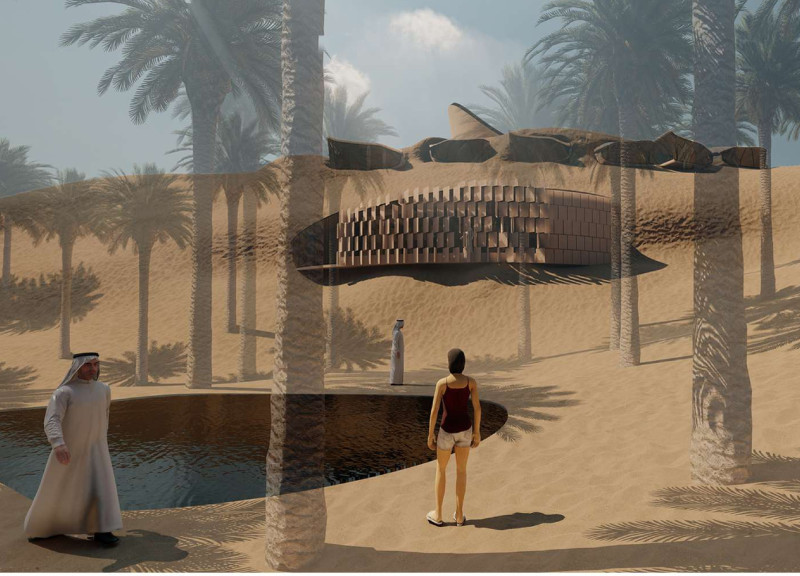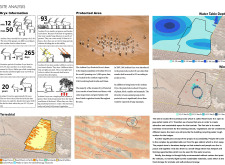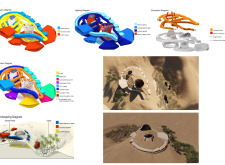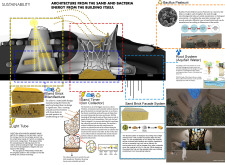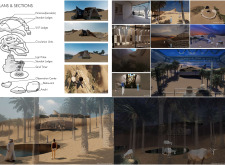5 key facts about this project
The Desert Oasis project is an architectural design initiative located near Heart Dune in the southern region of the United Arab Emirates. This project addresses the intersection of tourism and ecology by creating a sustainable complex that introduces visitors to the unique desert landscape while minimizing environmental impact. The design integrates local materials and ecological principles, aiming to serve both functional and aesthetic purposes in harmony with the existing ecosystem.
Sustainability and environmental integration are at the core of this project. The architectural design incorporates features that allow for natural light utilization through light tubes, reduces energy consumption, and promotes water conservation via aquifer water systems. The project employs sand bricks made from local resources, reducing the need for external materials and demonstrating the suitability of regional characteristics in construction. Overall, the Desert Oasis functions as a tourism hub, offering a variety of lodging options, public spaces for engagement, and pathways that showcase the surrounding landscape.
The unique aspect of this project lies in its commitment to fostering biodiversity and encouraging ecological awareness. The integration of desert plants in the landscaping enhances the visual appeal while supporting local wildlife, including the endangered Arabian Oryx. Additionally, the architectural elements are designed to blend with the natural environment, avoiding disruption to the existing habitat. The use of natural forms in pathways fosters a sense of exploration, allowing visitors to appreciate the desert’s beauty while providing functional circulation routes.
The design strategies deployed in the Desert Oasis project extend beyond aesthetic considerations. The incorporation of sustainability cores and energy-generating systems showcases a comprehensive approach to architectural design that prioritizes environmental responsibility. Features such as sand timers facilitate natural processes, promoting sustainable practices within the architectural context. By merging tourism and conservation, the project represents a model for future developments in arid regions.
For stakeholders and interested readers, further exploration of the architectural plans, sections, designs, and ideas behind the Desert Oasis project provides deeper insights into the innovative approaches and sustainable solutions employed in the design. Engaging with these elements will offer a more comprehensive understanding of how the project addresses both ecological concerns and tourism needs.


